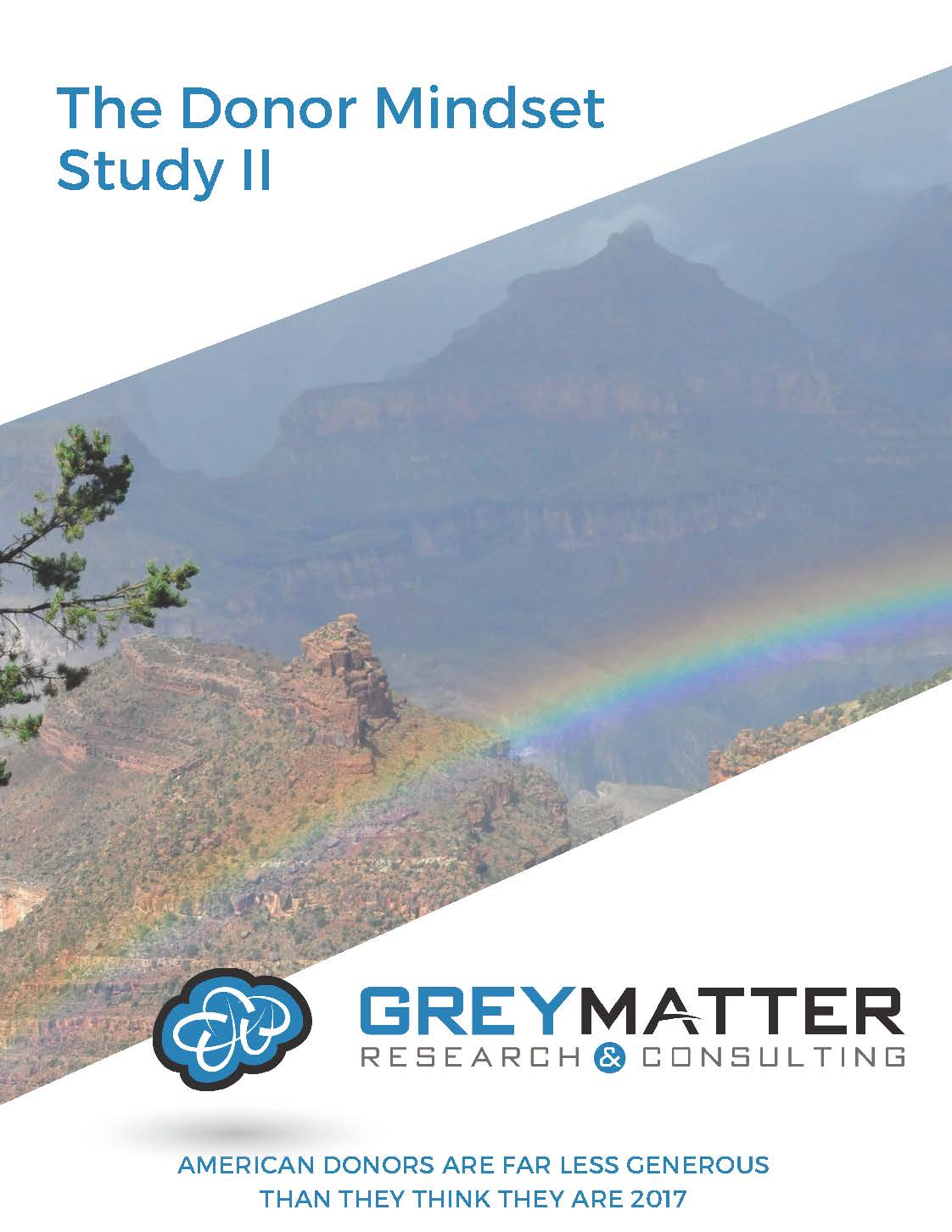Americans donors are far less generous than they think they are, which may suppress giving
What is generosity? And how generous are Americans? Our generosity is nowhere near as high as we think it is.
Grey Matter’s national study includes 1,000 American charitable donors. We show nearly nine out of ten donors believe they give away a higher proportion of their household income than they actually do.
l

The Donor Mindset Study, conducted by Grey Matter Research, finds the gap between what people give and what they think they give is not just a minor difference. The average donor quotes a percentage that is 331% higher than what they actually give.
Perception Isn’t Reality
Our study asked donors to report the dollar figure of what they contributed to charitable organizations in the last 12 months. (They also separately reported any gifts they may have made to a local place of worship.) Elsewhere in the study, they also estimated what proportion of their household income they give to charity.
The average American donor gives 1.95% of his or her household income to charitable organizations (3.2% if giving to local places of worship is included). But when asked to assess the proportion of their income they give away to charitable organizations, the average donor estimates their giving to charities at 8.41% of their income.
The gap between actual and perceived giving usually isn’t a small one. In fact, 34% of donors overestimate the proportion they give to charity by 50% to 89%, while another 35% overestimate it by 90% or more. While just 4% give at least one-tenth of household income to charity, 38% believe they give one-tenth or more.
The gap between actual and perceived giving exists for every type of donor. It is particularly large for Roman Catholics, while smaller than average for those who regularly attend Protestant worship services. Donors who give smaller dollar amounts to charity, along with those under age 50, also have a gap that is larger than average.
Not as Special as They Think
Donors also see themselves as part of a select group. We asked them to estimate the proportion of Americans who gave money to charity in the last 12 months. The average donor came up with a figure of just 28%. In reality, 55% of Americans gave to charities in the last year. The figure rises to 64% if local places of worship are included. Yet only 15% of donors believe the majority of Americans give to charity.
Study participants were also asked to estimate the proportion of their household income the typical American donor gives to charity. The average estimate came in at 9.47%. Six out of ten donors believe their own giving is at or above what the typical American donor contributes.
Does This Limit Giving?
Ron Sellers, president of Grey Matter Research, notes that three key points from the generosity research should concern donor-supported organizations. “One, the average donor feels he or she is part of a select minority who support charities,” Sellers said. “Two, the vast majority of donors severely overestimate the proportion of their income they contribute. Three, six out of ten think they’re doing as much as, or more than, other donors. When your perception is that you are doing so much, and so much more than others, what reason is there to consider doing more?”
The research report points out that charities need to ponder how to encourage people to give more in general, not just more to one specific organization. The study draws a parallel between the charitable sector and the retirement savings sector, where companies commonly first promote saving in general. Then they help people understand retirement funding, set goals, and work to reach those goals. Few organizations in the charitable sector take the same approach with giving, promoting overall generosity.
Please e-mail ron@greymatterresearch.com for a free copy of the full report.
About Grey Matter Research
Grey Matter Research is a marketing research and consumer insights company with extensive experience serving non-profit organizations. Grey Matter works directly with donor-supported organizations and in partnership with the fundraising, branding, and marketing services agencies that support them.
